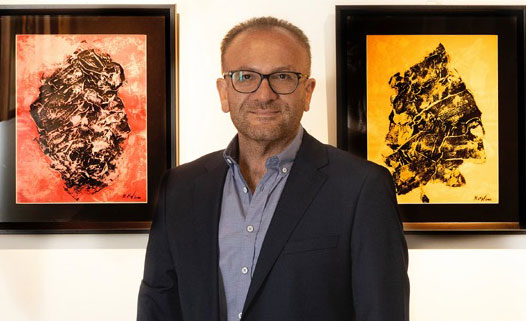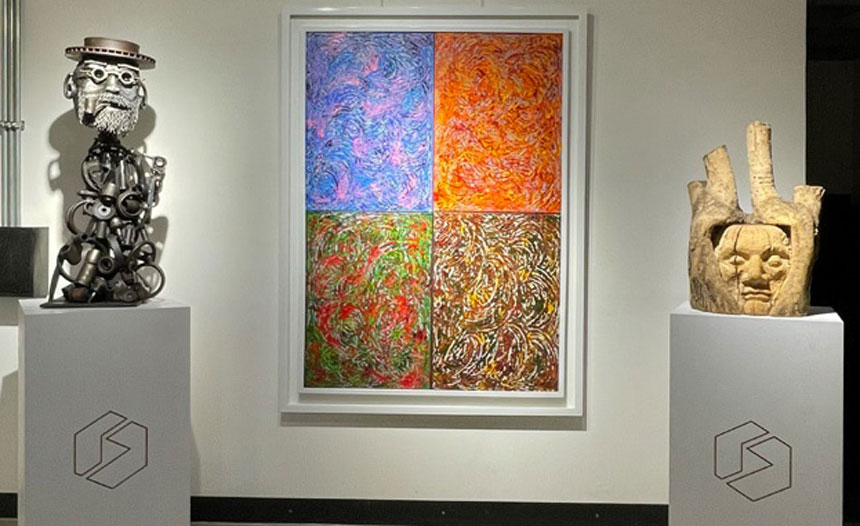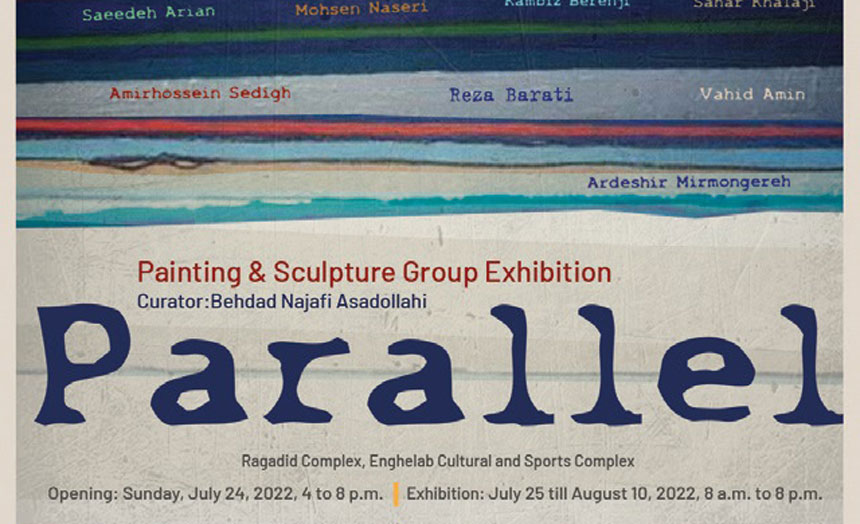By: Behdad Najafi Asadollahi
Behdad Najafi Asadollahi
Artist, curator, and director of
Ragadid Complex
In the current century, “creativity” is undoubtedly what adds a competitive advantage to all goods and services in human societies and distinguishes them from other competitors. Without creativity in any field or activity, Humans will not be able to find a suitable and distinct place in the market nor in the society, and with duplicate products and outputs identical to competitors, he will definitely not achieve significant success. This is why creativity can be considered the most important and main factor of human success in the future.
Art and artistic activities in all disciplines are not exempted from this law, success and being able to stand in a special place in the market and artistic communities requires being innovative in creating a piece or a collection. In fact, we can confirm that today the importance of creativity in art is far more important and vibrant than other human activities, according to the nature of art itself, creativity plays the most important role in making work of art. There are two stages in creating an artwork:
- Creation that includes; Idea and design
- Production which includes; implementation and presentation. Sometimes it is done as a single process and all is done at the same time, meaning that all the idea in the mind of the artist is immediately implemented, or it can be done in the form of two independent processes and possibly with a time interval, which in this case usually, first the creation process that happens in the artist’s mind sometimes in the form of a design that did not exist before, sketches appear on the paper as the basic stages of creation. Since creativity is the main core of making an artwork, therefore, in art, in addition to its main role in making the distinction between each work, it is also one of the main assumed purposes of its creation.
Another reason that makes creativity very important in art is the constant oversupply in today’s art market. This makes the competition in the market and artistic community far more challenging compared to other markets. Also makes the role of an innovative mind in creating new and unique techniques and work to stand out more than before. The outcome of this competitive atmosphere has given the art lovers a lot of options in terms of style, technique and performance of art.
In one word, creativity is the process of transforming a new idea into a comprehensible and observable reality. In various fields of art, “new ideas” actually come from the opinions, imaginations, thoughts and views of the artists and art directors, which become real in the form of an artwork or performance. One of the distinctive features of creativity is that it gives humans a new insight and power to understand the universe from different point of views and enables us to discover the hidden patterns in nature and the relationships between unrelated events and objects. Also to find new solutions regarding the pending studies on various issues. Considering the importance of this issue, we should be reminded again that a creative process consists of two main stages:
- Creation: idea and design
- Production: implementation and presentation
An individual who only has bright and beautiful thoughts and ideas, which have never been implemented nor performed, in fact, he is considered to be a thoughtful and imaginative person and maybe a good theorist, but he cannot be called a “creative person”.
Creativity may be described as a process of random combination that creates new ideas for implementation with the ability to access, exploit and combine knowledge, information, insight and mental inspirations, in other words everything that has been acquired in our minds during our life in a way to transmit something valuable from the stage of “none existence” to “existence”. This process consciously uncovers what was previously hidden which means bringing it to life again. Suddenly after this rebirth the creator or better say the artist feels a great amount of excitement and joy.
We confirm that an artwork needs to meet 4 factors in order to be considered a creative work:
- The first and basic condition is being original (not a copy).
- Must be produced based on a creation set up, and the target concept should not be easily predictable from the beginning.
- To be personal and exclusive and actually “belong to” the artist.
- Creating value for the creator (including artistic value and consequently economic, educational, cultural, etc.)
Creativity, Always and Everywhere
Creativity is a process that should always be included in the strategic planning of all artistic activities as a necessity as an absolute and permanent fact to enable the artist to maintain the distinctive position he/she has gained in the society and market. This is because in today’s world of mass communication media and global access to the Internet and social networks, people lose interest very quickly in any successful creative activity or idea as it shortly melts in to the normal and everyday life of the humans. It also loses its value as a competitive advantage and as a distinct phenomenon.
Can Creativity be Learned or Improved?
In one word the answer is “YES”.
To expand our one-word answer, we can say “Creativity” and being creative can not only be learned, but scientists have confirmed that humans are inherently creative’ and unlike public beliefs, humans learn how “Not to Be Creative” through life! Creativity is a skill that not only can be learnt and developed but it’s a process which can be managed and continuously improved.
A Word with Behdad Najafi-Artist, Curator, and Manager of Ragadid Complex-
Like No One Else
Parallel Exhibition hosted by Ragadid Group
The opening of the exhibition curated by Behdad Najafi was on 24th July 2022. Behdad did an explicit selection of paintings, sculpture and layout designs from 22 visual arts professionals and artists as follows:
Vahid Amin, Saeedeh Arian, Parastou Azizi, Mina Bahreini, Reza Barati, Kambiz Berenji, Mehdi Esmaeilzadeh (Hoomaan), Meraj Golzadeh, Sahar Khalaji, Hossein Khoshraftar Roudi, Mani Kumar, Ardeshir Mirmongereh, Pejman Motaghian, Behdad Najafi Asadollahi, Mohsen Naseri, Keivan Rahiminejad, Saman Shadanloo (Ilkhan), Mehrangiz Shafeie, Mohsen Soleimani, Naser Soleimani and Sina Soltaniani.
According to Behdad Najafi, one of the turning points in the career of each and every artist is to achieve a personal unique style in either the procedure or the content or sometimes in both aspects in a way for each work to be a representative of the artist itself. In other words, each artwork can be a signature of the creator.
The Parallel arrangement of this exhibition gave the public the opportunity to view the art which represented the unique artistic techniques. He added that despite the differences in the nature, style and technique of each piece, yet the coherent theme of the exhibition along with the special setting created a unified and purposeful path for the visitors to follow.
Saeedeh Arian, the artistic director of this event, said: Contemporary artists try to provide a personal definition of “originality” through the creation of an Artwork. The concept of “originality of the work” has caused every artist to follow a personal concept and mindset that is “like no one else”. Not being similar to others, being like no one but yourself is a phenomenon that was not as important as it is in the past. Nowadays, “being like no one else” has become the concern of contemporary artists before and after the creation of their art.
She added that the “Parallel Exhibition”, expresses an “Individual Originality” of the Iranian painters and sculptors with a glimpse of “Collective Originality”.
This art event was organized by “Khanesh Moaser Art Institute” in partnership with Faradid Honar Farda Cultural Institute in the “Ragadid Complex”.





